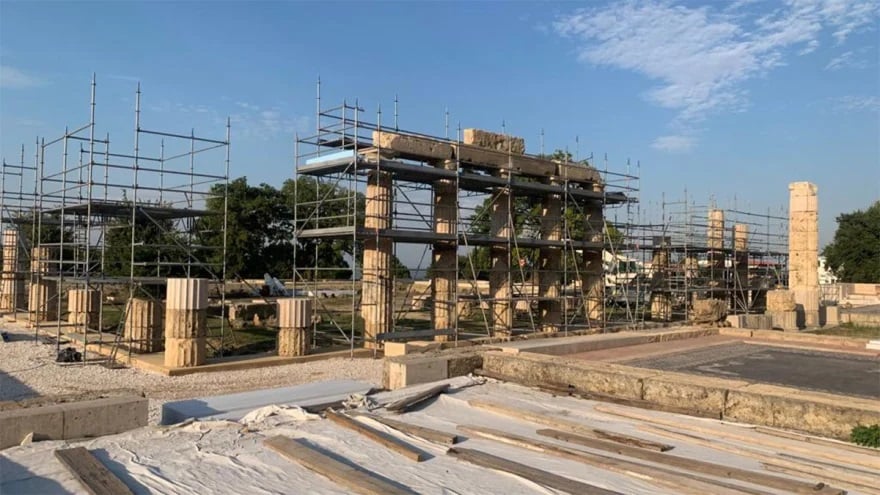
This week, after years of restoration work, Greece is set to open the Palace of Aigai, where Alexander the Great was sworn in as king.
Culture Minister Lina Mendoni announced that the official opening of the place, which the scholar of ancient architecture Wolfram Hoepfner called the “Parthenon of Macedonia,” will be held this coming Friday by Greek PM Kyriakos Mitsotakis.
“It is the palace where Alexander the Great was crowned king of the Macedonians,” Mendoni said. “A building impressive both in its magnificence and in size, a unique monument, which, in combination with the Museum that we inaugurated a year ago, together with the cultural wealth of the Aigai, creates a strong cultural pole for Greece and a major development resource for Macedonia.”
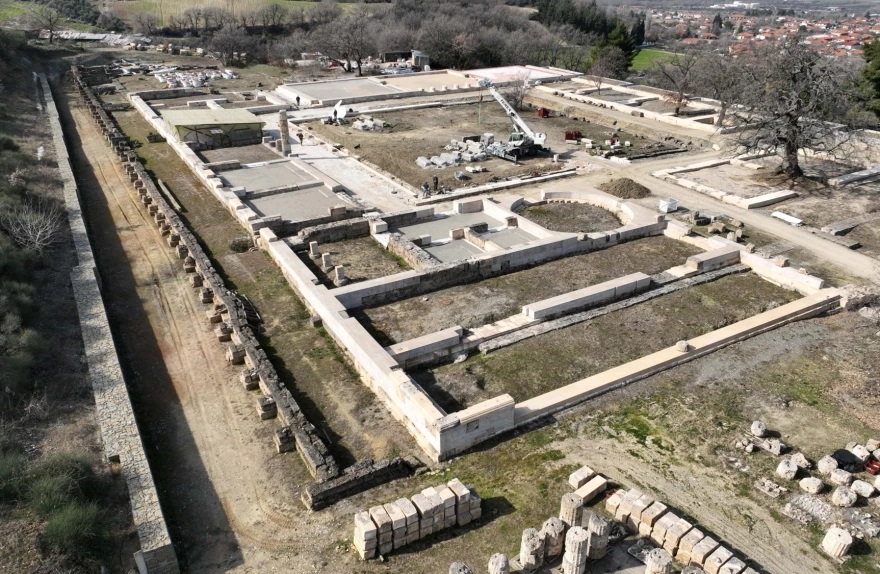
The Palace of Aigai, known today as Vergina, is considered not only the biggest but along with the Parthenon, the most significant building of classical Greece.
Constructed during the reign of Philip II (359 – 336 BC) on a raised outcrop in Vergina in northern Greece, the palace, a remarkable landmark and symbol of power and beauty three times the size of the Parthenon, was visible from the whole Macedonian basin.
In December 2022, Greece opened a new museum, which unites the Palace of Aigai, the royal tombs cluster, and the Museum of the Royal Tombs.
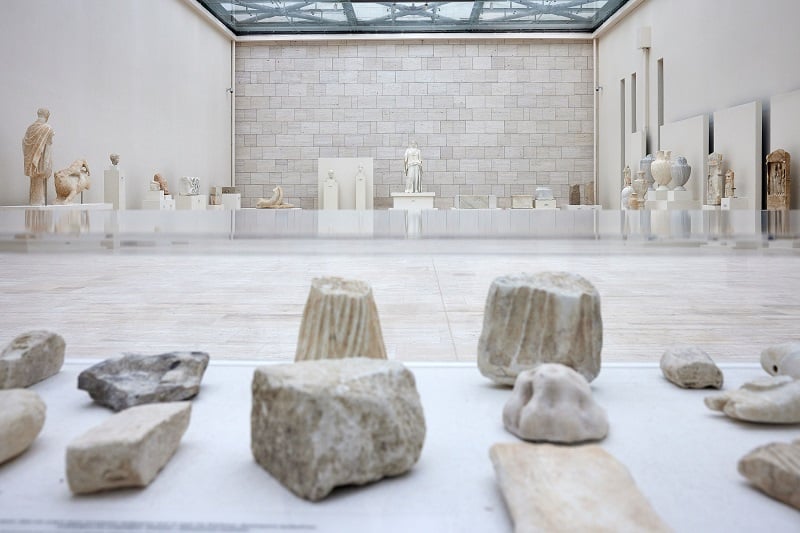
It is designed as a conceptual gateway to the archaeological site and to the history of Aigai and of Macedonian culture, as well as of the Hellenistic World. It will also serve as the site of the Digital Museum “Alexander the Great: from Aigai to the World.”
Archaeological evidence proves that the site was continuously inhabited beginning in the Early Bronze Age (3rd Millenium BC), while in the Early Iron Age (11th to 8th centuries BC), it became an important, rich, and densely populated center.
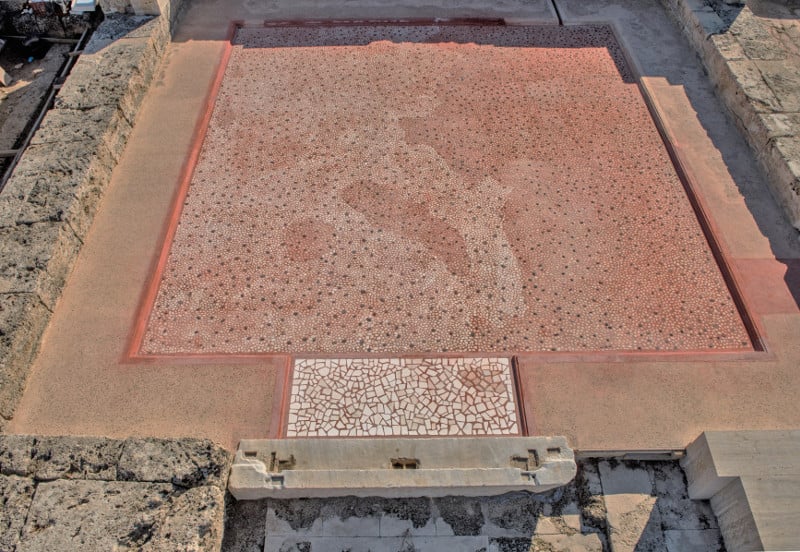
The city reached its zenith in the Archaic (7th – 6th centuries BC) and Classical periods (5th-4th centuries), when it was the most important urban center of the area, the seat of the Macedonian kings, and the site for the establishment of many traditional sanctuaries.
The Palace of Aigai was designed for Philip II by an ingenious architect, most likely Pytheos, known for his contribution to the construction of the Mausoleum at Halicarnassus, the development of urban planning and the theory of proportion.
Aigai Palace was covered with high-quality marble stucco
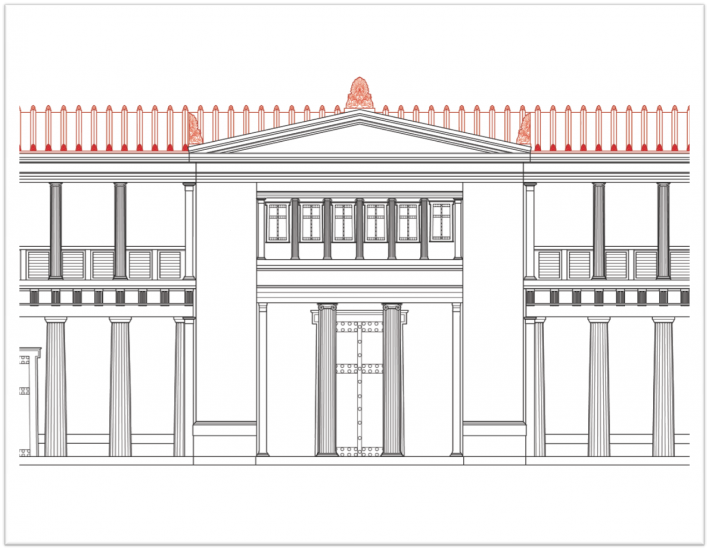
The east wing of Aigai Palace included a monumental entrance, the ‘Tholos’ (probably a place of worship), and other rooms of unknown purpose. The south wing contained the residential rooms proper as well as banqueting halls decorated with mosaic floors. Banqueting halls were located in the west wing.
On the lower north slope, a long, narrow veranda stretched along the front of the chambers. The masonry and architectural features were covered with lustrous, high-quality marble stucco that resembles marble.
Thousands of roofing tiles and relief antefixes of excellent quality, hundreds of square meters of floors covered with marble inlays and mosaics, some of which constitute exceptional works of art, extravagant pigments, bronze, and all kinds of luxurious materials were utilized in the creation of a complex that would fulfill the king’s ambitions.
Basic elements of the structure include: the large square peristyle (row of columns surrounding a space within a building), which comprises the heart of the building; the surrounding areas with their impressive propylon (the structure forming the entrance to a building); and the stoes (porticos, roofed colonnades) which form the façade and by which the propylon is enclosed. These constitute the foundational elements of this contemporarily innovative architectural project.
See all the latest news from Greece and the world at Greekreporter.com. Contact our newsroom to report an update or send your story, photos and videos. Follow GR on Google News and subscribe here to our daily email!



